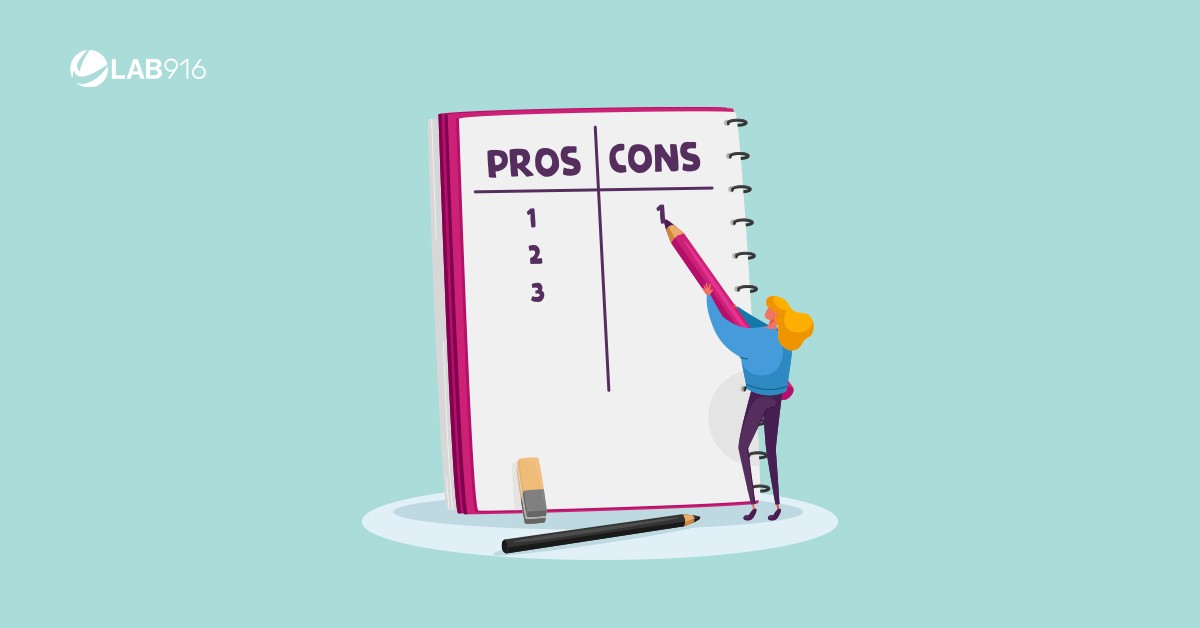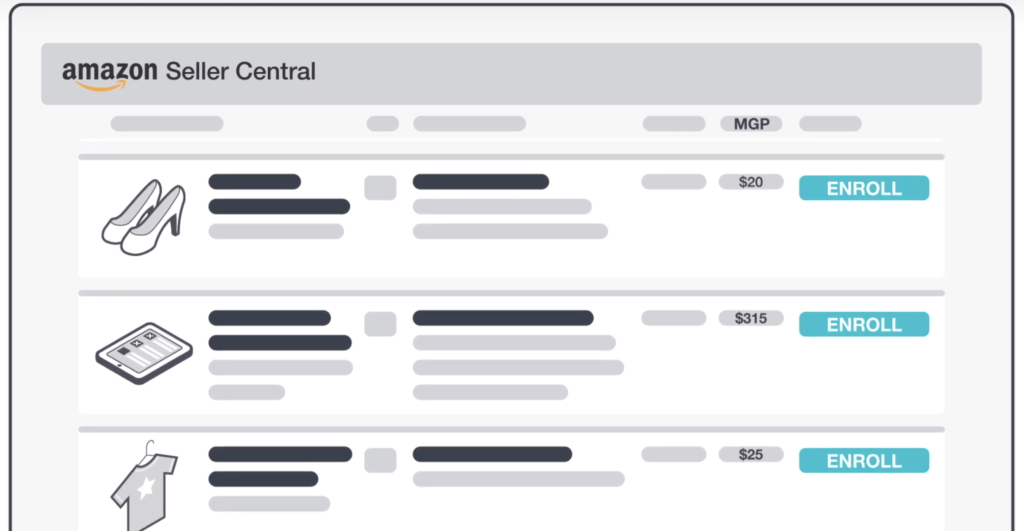
Welcome to Amazon SBA; Amazon’s new program to push competitive pricing in order to offer customers the lowest prices of any marketplace.
Sounds great for the consumer, but as a seller, you might be wondering how this new program can benefit you. Or maybe you’re thinking it won’t.
In this blog, we’ll help sellers with a rundown of the Sold by Amazon (SBA) program and leave you with some pros and cons to consider before enrolling your products in SBA.
Amazon SBA basics
The new SBA program launched in August of 2019 and now it’s available to all eligible sellers.
Essentially SBA, or Sold by Amazon is a selling approach that gives you, as a seller, the opportunity to maintain full control over listings and inventory while handing over the pricing responsibility to Amazon.
If you’re the type that wants a hands-off of the wheel selling experience, this may give you peace of mind. After all, who knows how to be successful on Amazon better than Amazon itself?
Perception of SBA
It seems at this time, not everyone is enthralled by the potential perks SBA offers, and some sellers are concerned about the program’s potential to undercut their products.
Sellers are also uneasy about where this program will lead 6 months down the line. All valid concerns, by the way, yet still, there are some things that might just benefit you and your business (we’ll get into all of those details here, later).
Who is eligible for Sold by Amazon
To enroll in the SBA program you must already have products that are
- Fulfilled by Amazon (FBA) through a professional seller central account
- Enrolled in Amazon’s Brand Registry
Keep in mind that while enrollment in the program is free, you are still required to pay all Amazon seller fees, including FBA fees.
If you meet all of the requirements listed, you are eligible to participate in SBA.
What happens when you enroll in SBA
To get started with SBA, sellers choose which products to turn over to Amazon for sales price-management.
This means Amazon will regularly monitor and recalculate the sales price, in real-time, to compete with other listings (on Amazon and in other marketplaces).
When you enroll a product, Amazon becomes the “seller of record” and covers all sales tax.
All products enrolled in SBA will display “Ships from and Sold by amazon.com” on the listing for potential buyers to see.
In exchange for giving Amazon pricing control, they offer you a guaranteed payout.
This is called the Minimum Gross Proceed (MGP). Amazon states that the MGP is in place to protect your margins. By offering MGP, Amazon ensures that sellers won’t incur any unexpected losses if they have to lower prices to make sales.
That’s it, that’s how SBA works, but don’t get too excited just yet, we still need to hash out the details. Consider the pros and cons below to further decide what will work for your business.
Does Amazon control your sales?
… & is that ultimately a good or bad thing for you?
Yes, enrolling in Amazon SBA means that your items are priced by Amazon, and they are control of your sales.
As long as you keep your product enrolled, Amazon will price it competitively. Again, you are required to pay FBA fees, control your listings & inventory, and it’s up to you to run ads, or keep ads running— if you want to.
Who can benefit from SBA

Sellers exclusive to Amazon
Sellers starting out, or sellers who are exclusive to selling their stuff on Amazon (not available in other marketplaces) are likely to benefit from enrolling in SBA.
As an exclusive Amazon seller, it’d be beneficial to offer competitive rates on Amazon because you don’t have to worry about undercutting your own products on other platforms. Additionally, the MGP ensures you will receive a payout.
Sellers with hard-to-move inventory
If you are a seller who is trying to get rid of inventory that’s collecting dust right now, or have discontinued products, SBA can also work in your favor.
You’re paying fees on the products anyway, so it might be beneficial to enroll those products in SBA to potentially help push them out.
Another way the MGP could benefit you is if you’re a seller with several SKUs and you just want to free your hands of some of them. While Amazon worries about pricing, you can focus your efforts on other things, like top-sellers…as long as the ASINs you want off your hands are eligible for the program.
Keep in mind: you are still required to pay ALL fees. We’ve said it 3 times now, so it’s a big deal. It’s important for you to calculate how much you will be getting (with MGP) after you pay your fees because it could be a bad move for you if that number means you’re losing money.
Speaking of money…
How much does Amazon pay me (the seller)?

MGP amounts are established by Amazon and agreed to by you, upfront.
You can see MGP offers on your SBA eligible items when you enroll in the Sold By Amazon program. Amazon generates a minimum gross proceed for all FBA products that are eligible for SBA and it’s up to you to accept it and enroll.
To give you an example of MGP and how minimum gross works let’s look at some numbers:
Amazon guarantees that you will always be paid the larger amount between the sales price and the MGP.
If you have an MGP of $10 and Amazon sells your products for $5, you will still get $10. If Amazon sells your product at $20, you’ll get $20. Your initial agreed upon MGP is the lowest amount they can pay you out.
However, the initial MGP is not a fixed rate. Amazon reserves the right to revisit the MGP amount and offer a new one every six months. Your options, if you aren’t satisfied with their new offer, are to accept or unenroll your product from the program.
I repeat: AMAZON decides the MGP amount & Amazon maintains control of changing MGP amounts, too.
It is definitely possible that your profit margin will decline at some point in the future, even if it seems promising right now. That’s not to say it, in fact, will decline, but it’s a possibility to keep in mind.
Nevertheless, MGP is a guaranteed rate that stands for six months, so you can always test it out.
Remember that MGP is take it or leave it, meaning if you don’t like the initial amount Amazon has calculated, there is no negotiating. Everyone’s situation is different and it’s ultimately up to you to apply this to your business and see if it works in your favor or not.
After all, you’re letting Amazon take the wheel & you know they will inevitably be steering your products in the direction of lower prices.
Overall SBA Pros & Cons

At this point, you have all the basics and some possible benefits, with warnings included. Here, I have taken everything from above to generate a list of positives and negatives that can come up if/ when you choose to enroll your SKUs.
Potential Positives with SBA:
- Ships from & Sold by Amazon.com: Potential customers can be more inclined to buy products from Amazon rather than a third party.
- Guaranteed Payout: With Minimum Gross Proceed (MGP), you are guaranteed a payout, even if amazon prices your products lower.
- Competitive Pricing: Amazon monitors and manages pricing for your products, so they will always be priced competitively.
- Tax-Exemption: You get a tax-exempt certificate & Amazon takes care of it for SBA enrolled products.
- Run Ads and Win the Buy Box: You remain in control of EVERYTHING except the sales price tag. So you can still run ads and optimize listings to get the most sales.
- You can always opt-out: There’s nothing locking you into keeping your products enrolled in SBA. If it isn’t working out, just un-enroll them.
Potential Negatives from SBA:
- MGP is Not Permanent: Amazon sets the amount & they can lower the MGP later, as a result, your profit could decrease.
- No Sales Guarantee: Amazon doesn’t guarantee to make sales. So your products enrolled in SBA may not even sell at all.
- Compete with Amazon Over Your Own Products: Once you give up your control to Amazon it can be a lot harder to compete if you un-enroll your product later. Customers are already used to Amazon’s low price for that product. On top of that, if you sell the same products in another marketplace, giving Amazon control of the sales price can backfire. People will just go to Amazon to get your products cheaper.
Steps to enroll in Sold by Amazon SBA

If you do decide to make the leap, Amazon actually made it very simple to enroll in the new program.
Step 1: Enroll in Brand Registry
If your account is already brand registered, you’re in.
If not, then you will need to register your brand through Amazon brand registry, get a professional selling account and get your products listed in the FBA program.
Once all that is out of the way, you can register in settings under your seller central account info.
Step 2: Select SKUs
After registering, all of your FBA eligible items will already be listed with an MGP amount assigned to them through Sold by Amazon.
You may immediately begin selecting SKUs from the list to enroll in SBA. You can access the eligible listings and submit them for enrollment into the program in the ‘Manage Inventory’ view.
The Takeaway
So now you’re ready to make your decision. You have pros, cons, and how to get started. Let us know what you decide.
Keep in mind: if you do change your mind along the way because Amazon SBA isn’t working in your favor.
There’s a simple 2-click process to unenroll your items. Enrolling in the new Sold By Amazon program is not a forever commitment.
